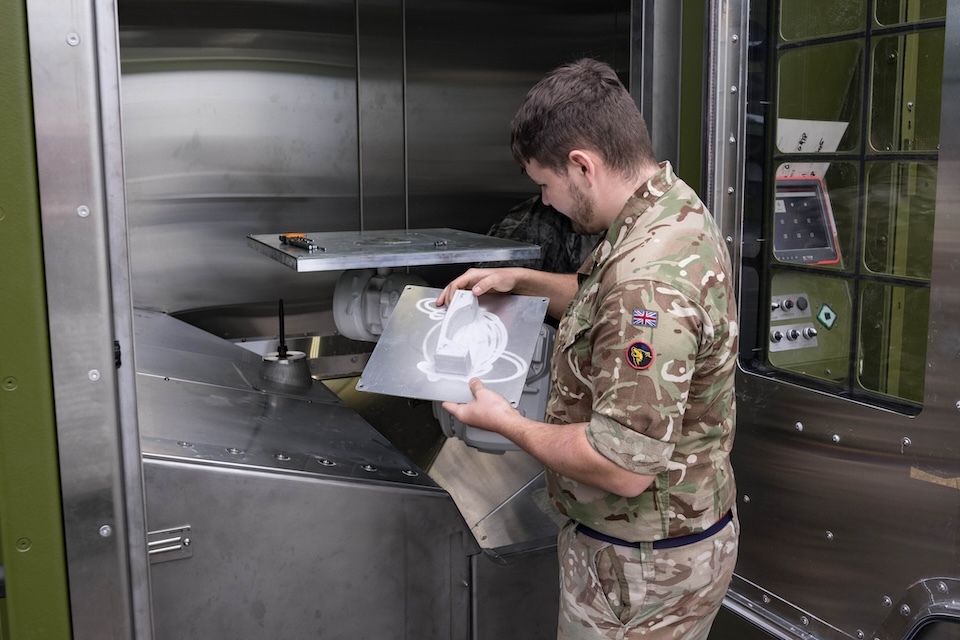The British Army has produced spare parts and modifications to field vehicles and equipment using 3D printers during NATO’s Exercise Steadfast Defender in Sennelager, Germany.
This marks the first time the technology has been used by any armed force in a NATO exercise.
The cold metal printers, manufactured by SPEE3D, can print batches of mechanical parts in a matter of hours, as opposed to relying on metalsmiths to make the parts by hand.
The printers’ deployments are part of Project Brokkr, which aims to bridge the gap between in-field demand for spare parts using printing technologies while eliminating expensive shipping and repair costs.
Trialing Capabilities
“This equipment gives the Army the flexibility it needs to make spares, components, and modifications to our equipment in the field, at point and time of need,” Lieutenant Colonel John Anthistle explained.
“Not only does it save us weeks and sometimes months of having to wait for replacement parts, it also enables us to print components which aren’t available anymore; conduct battle damage repair, and modify equipment to match changing threats,” he added.
The capabilities are currently being trialed to gauge the feasibility of its implementation on the frontlines, producing parts and repairing damaged tanks, vehicles, and artillery systems.
The UK’s 9 Battalion Royal Electrical & Mechanical Engineers manage the utilization of the printers during the exercise.
Deploying Printing Power
SPEE3D’s 3D printers have been utilized by various countries to boost supply chain operations and mitigate unexpected logistical issues during missions.
Last year, the company supplied seven WarpSPEE3D printers to Ukraine to help manufacture repair parts for various military equipment.
SPEE3D also partnered with the Australian Army in 2020 to help deploy its tactical printers in the remote Northern Territory bushland for Exercise Koolendong.



